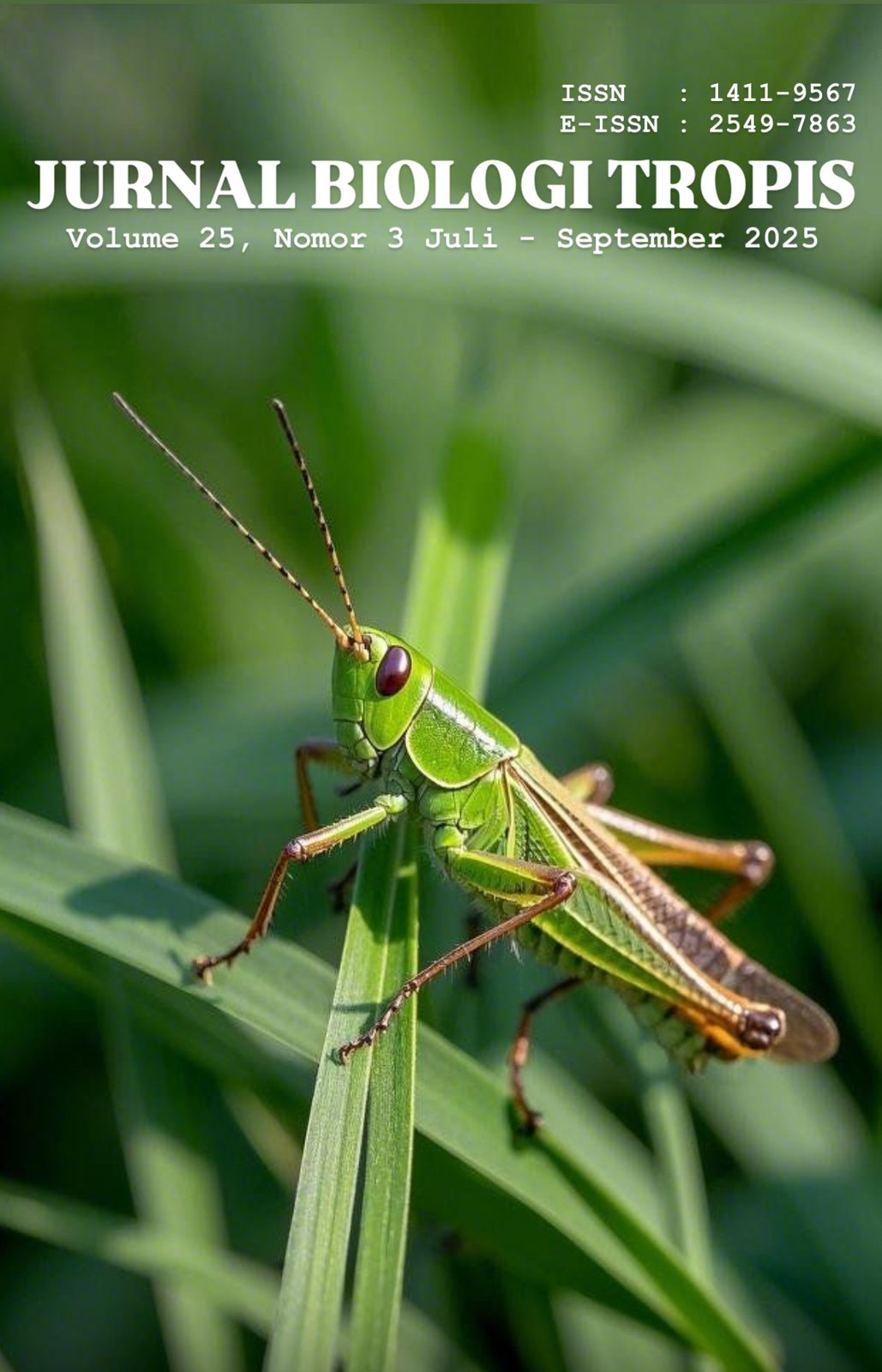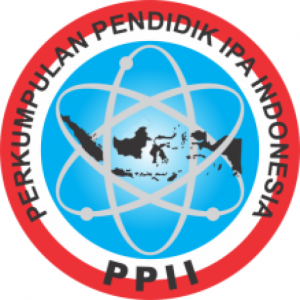Monitoring Land Cover Change Using Change Vector Analysis (CVA) in Central Bengkulu Regency, Indonesia
Authors
Firman Tikaputra , Nining Puspaningsih , Tatang TiryanaDOI:
10.29303/jbt.v25i3.9724Published:
2025-07-22Issue:
Vol. 25 No. 3 (2025): Juli-SeptemberKeywords:
Change Vector Analysis (CVA), land cover change, landsat, NDVI, NDBI, remote sensing, spatial planning.Articles
Downloads
How to Cite
Downloads
Metrics
Abstract
Monitoring land cover change is essential for sustainable spatial planning in regions undergoing rapid development. This study aimed to evaluate Land cover changes in Central Bengkulu Regency during the 2008–2024 period were analyzed using the Maximum Likelihood Classification (MLC) method, which identified nine land cover classes with moderately good accuracy (Overall Accuracy of 66.7% and Kappa coefficient of 61.3% for Landsat 5 imagery in 2008, and 58.0% OA and 50.1% Kappa in 2024). Significant land cover dynamics were observed, with notable increases in shrub and plantation areas, and substantial decreases in primary dryland forest, rice fields, and open land. Change Vector Analysis (CVA), combining NDVI and NDBI indices, proved effective in detecting both the magnitude and direction of land cover change. The largest change category was "Stable/Not Significant" (±65,000 ha), followed by "Rehabilitation/Recovery" (±24,700 ha), and "Urban Development" (±10,800 ha). These changes reflect the strong influence of socio-economic drivers such as population growth, land conversion for oil palm plantations, and settlement expansion, as well as ecological factors such as degradation and natural succession. The results indicate that the integrative approach of CVA and spectral indices can serve as a reliable spatio-temporal analysis tool to support spatial planning and sustainable land management policies, particularly in newly established regions vulnerable to land conversion.
References
Abbas, T., Shoaib, M., Albano, R., Baig, M., Ali, I., Farid, H., & Ali, M. (2025). Artificial-Intelligence-Based Investigation on Land Use and Land Cover (LULC) Changes in Response to Population Growth in South Punjab, Pakistan. Land. https://doi.org/10.3390/land14010154.
Aniah, P., Millar, K., & Akongbangre, J. (2025). Dynamics and Perceived Drivers of Land Use and Cover Change in the Kassena-Nankana West District of Ghana. Environmental Development. https://doi.org/10.1016/j.envdev.2025.101154
Austin, K. G., Schwantes, A., Gu, Y., & Kasibhatla, P. S. (2017). What causes deforestation in Indonesia? Environmental Research Letters, 12(4), 044010. https://doi.org/10.1088/1748-9326/aa6512.
Choukiker, S. (2021). A Literature Review on Land Use Land Cover Changes Detection using Remote Sensing and GIS. International Journal for Research in Applied Science and Engineering Technology, 9, 725-735. https://doi.org/10.22214/IJRASET.2021.33349
Feng, H., Wang, S., Zou, B., Nie, Y., Ye, S., Ding, Y., & Zhu, S. (2022). Land use and cover change (LUCC) impacts on Earth’s eco-environments: research progress and prospects. Advances in Space Research. https://doi.org/10.1016/j.asr.2022.09.054
Gandharum, L. W., Handayani, W., & Setiawan, B. (2024). Urban expansion and land use change in peri-urban Indonesia. Jurnal Tata Ruang, 9(1), 55–70. https://doi.org/10.7454/jtr.v9i1.3211
Hakim, A., Ridwansyah, I., & Sencaki, D. (2024). Correlation between population growth and land use change: a study in the catchment area of Singkarak Lake, West Sumatra. IOP Conference Series: Earth and Environmental Science, 1436. https://doi.org/10.1088/1755-1315/1436/1/012015.
Harianto, R., Suyanto, A., & Fitriani, D. (2022). Konversi hutan dan perubahan penggunaan lahan di daerah aliran sungai tropis. Jurnal Penelitian Kehutanan Wallacea, 11(1), 23–34. https://doi.org/10.18330/jwallacea.2022.11.1.23.
Juniyanti, L., Saputra, D., & Rahmi, H. (2020). Perubahan tutupan lahan di kawasan deforestasi Sumatera Barat. Jurnal Ilmu Lingkungan, 18(1), 17–28. https://doi.org/10.14710/jil.18.1.17-28
Karimov, Y., Musaev, I., Mirzababayeva, S., Abobakirova, Z., Umarov, S., & Mirzaeva, Z. (2023). Land use and land cover change dynamics of Uzbekistan: a review. E3S Web of Conferences. https://doi.org/10.1051/e3sconf/202342103007
Liu, H., Gong, P., Wang, J., Clinton, N., Bai, Y., & Liang, S. (2019). Annual dynamics of global land cover and its long-term changes from 1982 to 2015. Earth System Science Data. https://doi.org/10.5194/ESSD-12-1217-2020.
Mahmud, M., & Kurniawan, A. (2025). Analisis spasial bencana banjir di Provinsi Bengkulu. Jurnal Bencana dan Mitigasi, 12(1), 21–33. https://doi.org/10.24843/jbm.2025.v12.i1.21.
Maja, M., & Ayano, S. (2021). The Impact of Population Growth on Natural Resources and Farmers’ Capacity to Adapt to Climate Change in Low-Income Countries. Earth Systems and Environment, 5, 271 - 283. https://doi.org/10.1007/s41748-021-00209-6.
Marques, A., Martins, I., Kastner, T., Plutzar, C., Theurl, M., Eisenmenger, N., Huijbregts, M., Wood, R., Stadler, K., Bruckner, M., Canelas, J., Hilbers, J., Tukker, A., Erb, K., & Pereira, H. (2019). Increasing impacts of land-use on biodiversity and carbon-sequestration driven by population and economic growth. Nature ecology & evolution, 3, 628 - 637. https://doi.org/10.1038/s41559-019-0824-3.
Ogunbode, T., Oyebamiji, V., Sanni, D., Akinwale, E., & Akinluyi, F. (2025). Environmental impacts of urban growth and land use changes in tropical cities. Frontiers in Sustainable Cities. https://doi.org/10.3389/frsc.2024.1481932.
Roy, P., Ramachandran, R., Paul, O., Thakur, P., Ravan, S., Behera, M., Sarangi, C., & Kanawade, V. (2022). Anthropogenic Land Use and Land Cover Changes—A Review on Its Environmental Consequences and Climate Change. Journal of the Indian Society of Remote Sensing, 50, 1615-1640. https://doi.org/10.1007/s12524-022-01569-w
Wihardjaka, A., Fauziyah, E., & Arifin, M. (2020). Ketahanan lahan sawah tadah hujan terhadap perubahan iklim. Jurnal Agro Ekonomi, 38(1), 49–63. https://doi.org/10.21082/jae.v38n1.2020.49-63.
Xing, H., Wang, H., Zhang, J., & Hou, D. (2023). Monitoring Land Cover Change by Leveraging a Dynamic Service-Oriented Computing Model. Remote. Sens., 15, 736. https://doi.org/10.3390/rs15030736.
Yasin, M., Anindita, R., & Prasetyo, A. (2025). Strategi perlindungan lahan pertanian dalam pengembangan wilayah perkotaan. Jurnal Pembangunan Wilayah dan Kota, 21(1), 11–22. https://doi.org/10.14710/pwk.v21i1.11-22
Zamhari, M., Putra, A. F., & Rahayu, S. (2019). Konversi lahan sawah ke penggunaan nonpertanian: Penyebab dan dampaknya. Jurnal Sosial Ekonomi Pertanian, 8(3), 123–132. https://doi.org/10.20961/jsep.8.3.123.
Zhang, X., Zhao, T., Xu, H., Liu, W., Wang, J., Chen, X., & Liu, L. (2024). GLC_FCS30D: the first global 30 m land-cover dynamics monitoring product with a fine classification system for the period from 1985 to 2022 generated using dense-time-series Landsat imagery and the continuous change-detection method. Earth System Science Data. https://doi.org/10.5194/essd-16-1353-2024.
License
Copyright (c) 2025 Firman Tikaputra, Nining Puspaningsih, Tatang Tiryana

This work is licensed under a Creative Commons Attribution 4.0 International License.

Jurnal Biologi Tropis is licensed under a Creative Commons Attribution 4.0 International License.
The copyright of the received article shall be assigned to the author as the owner of the paper. The intended copyright includes the right to publish the article in various forms (including reprints). The journal maintains the publishing rights to the published articles.
Authors are permitted to disseminate published articles by sharing the link/DOI of the article at the journal. Authors are allowed to use their articles for any legal purposes deemed necessary without written permission from the journal with an acknowledgment of initial publication to this journal.


























